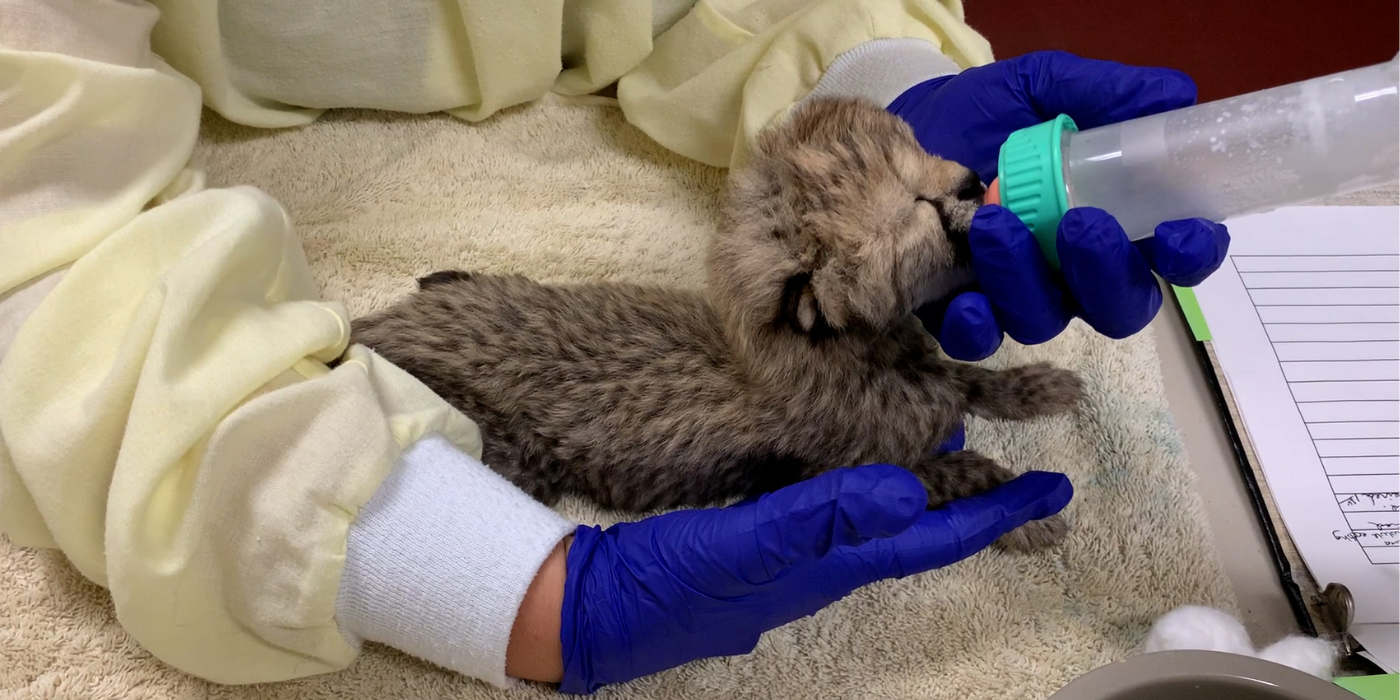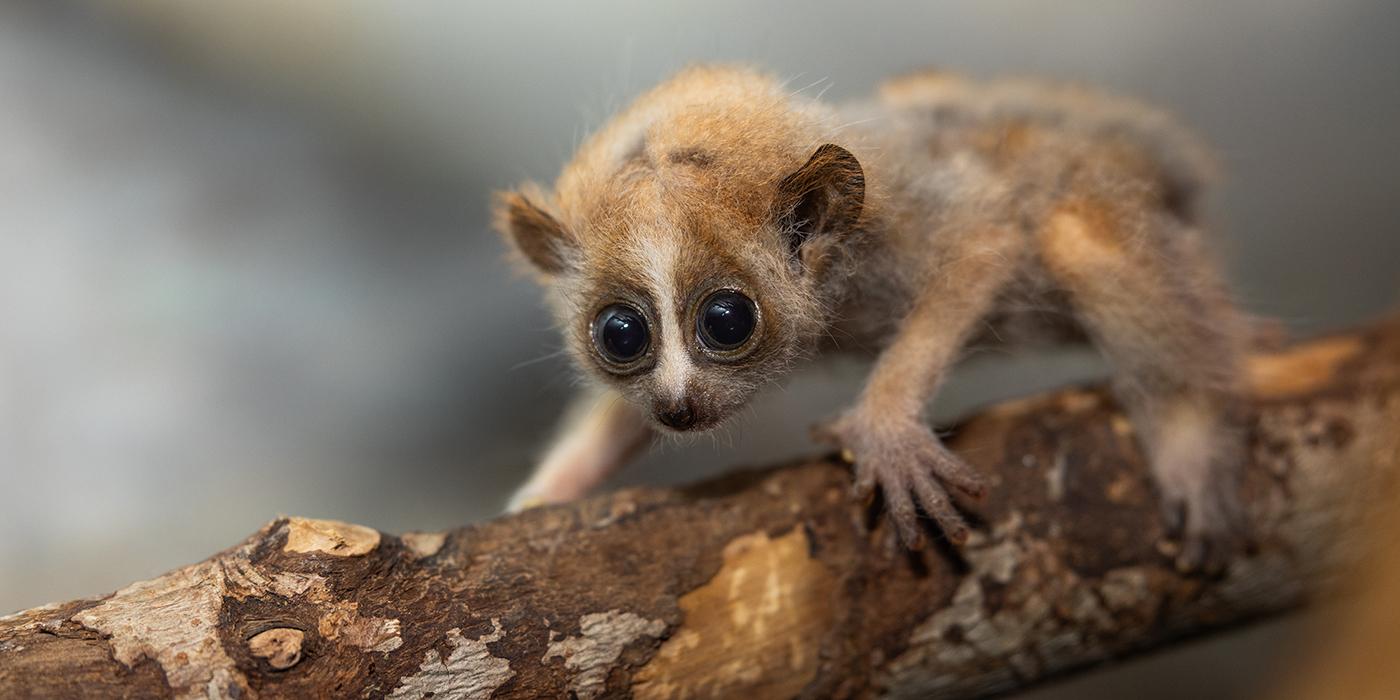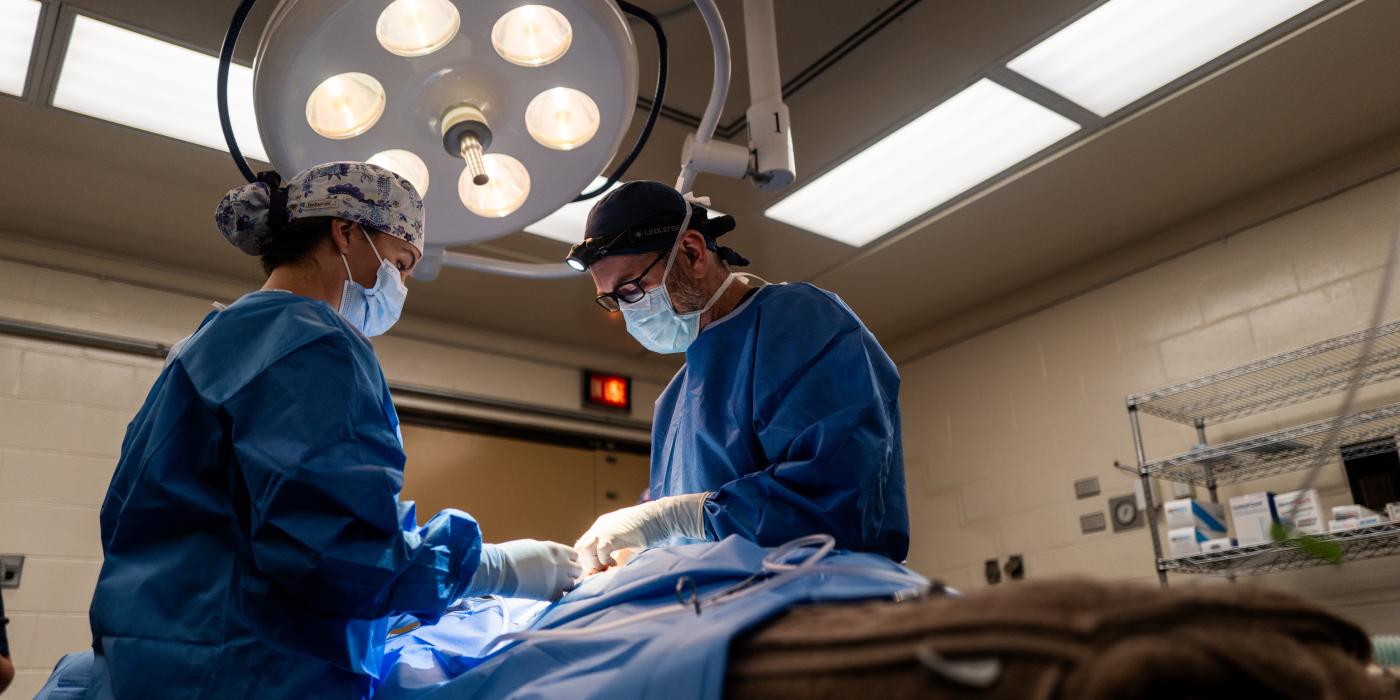Animal Care Staff Are Hand-rearing Cheetah Cub at the Smithsonian Conservation Biology Institute
Cub Will Go to Foster Cheetah Mother in Coming Weeks

Animal care staff at the Smithsonian Conservation Biology Institute (SCBI) are hand-raising a male cheetah cub for several weeks before placing the cub with a foster cheetah mother at another zoo. The cub was one of a litter of three born to 7-year-old female Sukiri Sept. 16; one cub was stillborn and one cub did not survive after a few minutes (updated 9/21/21). Keepers report the cub is strong, active, vocal and eating well. The Cheetah Cub Cam is offline as the cub is no longer in the den.
“We are always prepared to intervene when necessary,” said Adrienne Crosier, cheetah reproductive biologist at SCBI and head of the Association of Zoos and Aquariums (AZA) Cheetah Species Survival Plan (SSP). “We know from cheetahs in human care there is not enough stimulation to keep milk production going for a singleton. In the wild, a female cheetah would abandon a lone cub. If this cub was to survive, we had to step in.”
While Sukiri nursed the surviving cub overnight, providing critical warmth, colostrum and hydration, she started to ignore the cub the morning of Sept. 17. She did not appear agitated when the cub was removed by keepers from her yard later that day and continues to behave and eat normally. Sukiri ate the two stillborn cubs, which is not unusual for a carnivore and in line with wild female cheetah behavior as a dead cub invites predators.
Animal care staff are staying around the clock to feed the cub every 2 to 3 1/2 hours in SCBI’s veterinary hospital. The cub is being fed a formula used successfully to hand-raise cheetah cubs at other zoos. In the coming weeks, a female cheetah at another AZA-accredited zoo is set to give birth. At the recommendation of the SSP, this cub will be introduced to that litter pending any other developments.
“While we can care for this cub in the short term, it’s important he learns how to be a cheetah from other cheetahs close to his age and have the attention of an adult female cheetah soon,” Crosier said. “We hope to have more cheetah cubs born at SCBI in the near future, but the timing is not ideal for the cub to stay here.”
SCBI is part of the Cheetah Breeding Center Coalition—a group of 10 cheetah breeding centers across the United States that aim to create and maintain a sustainable North American cheetah population under human care. This cub is a significant addition to the SSP for cheetahs, as each individual contributes to this program.
The SSP scientists determine which animals to breed by considering their genetic makeup, health and temperament, among other factors. Sukiri and 5-year-old male Scott were paired and bred in June. Keepers trained Sukiri to voluntarily participate in ultrasounds, and SCBI veterinarians confirmed her pregnancy July 27. Since the ultrasound, Sukiri behaved normally and there were no signs of pregnancy complications. It is not uncommon for cheetahs to have stillborn cubs. Since 2007, 15 litters of cheetah cubs have been born at SCBI.
Cheetahs live in small, isolated populations, mostly in sub-Saharan Africa. Many of their strongholds are in eastern and southern African parks. Due to human conflict, poaching and habitat and prey-base loss, there are only an estimated 7,000 to 7,500 cheetahs left in the wild. The International Union for Conservation of Nature considers cheetahs vulnerable to extinction.
At SCBI headquarters in Front Royal, Virginia, scientists study and breed more than 20 species, including some that were once extinct in the wild, such as black-footed ferrets and scimitar-horned oryx. Animals thrive in specialized barns and building complexes spread over more than 3,200 acres. The sprawling environment allows for unique studies that contribute to the survival of threatened, difficult-to-breed species with distinct needs, especially those requiring large areas, natural group sizes and minimal public disturbance. SCBI spearheads research programs in Virginia, the Zoo in Washington, D.C., and at field research stations and training sites worldwide. SCBI scientists tackle some of today’s most complex conservation challenges by applying and sharing what they learn about animal behavior and reproduction, ecology, genetics, migration and conservation sustainability.
Related Species:




